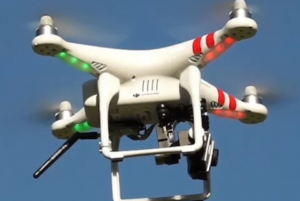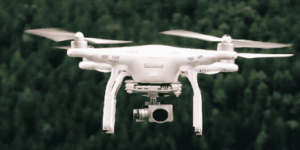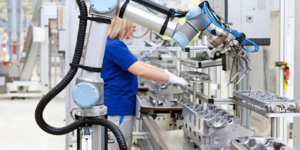The days of heavy, large, and expensive Unmanned Aerial Vehicles (UAVs)are over, and the advent of 3D printing has taken over the UAV industry. The transformative 3D printing technology known as rapid additive manufacturing has given significant potential to sectors such as defense, agriculture, photography, and even the content creation industry.

And recently, UAVs, also known as drones that are known traditionally to serve the military, helping them to carry out missions on the field, has benefitted from the 3D technology. This technology enables prototype manufacturers to improve the traditional drones’ size, customization, energy efficiency, payload, capacity, and durability of parts. The additive manufacturing process has proven tremendously helpful in the future of aerospace, defense, and other industries that require UAVs.
1. Customization
One of the significant advantages of 3D printing in the UAV industry is customization. The ability of the rapid prototyping and manufacturing industry to create unique parts for each application is a game-changer.
AVs are used in various industries, and each sector has unique requirements. For example, the military requires drones to withstand harsh environmental conditions, while agricultural drones need to be lightweight and agile to cover vast areas.
3D printing allows prototype manufacturers to design and produce customized parts that meet the specific requirements of each industry. This customization ensures that UAVs are fit for purpose and are more effective in their respective applications.
In addition, with 3D prototyping services, individuals and industries can leverage digital models to achieve tiny details and test more diverse parts. With this, UAVs have become incredibly popular and cheap in recent years.
2. Weight Reduction
The ability of the drone designs to striking a balance between the weight and power of its engine is a critical factor in the UAV industry. This is because the question, ‘how do you build something strong enough to fly and light enough to resist the earth’s gravitational force still’ is the aim of building UAVs.
With this question, the drone’s weight becomes a critical factor in the design of UAVs. Lightweight UAVs propel faster, have longer flight times, carry more payload, reduce energy use, and are generally more efficient.
The rapid additive manufacturing industry (3D printing) enables the creation of complex geometries that can significantly reduce the weight of parts with its injection molding and machining process. This is achieved through topology optimization, a design process that maximizes strength and minimizes weight.
The traditional manufacturing process requires extra material in some places just for a part to be manufacturable, which directly increases part weight. With the advent of 3D printing, such processes do not exist again. You can now machine hollow and lattice parts.
In addition, traditional manufacturing methods cannot produce the complex geometries required for topology optimization. However, 3D printing can easily create complex geometries, making it an ideal UAV weight reduction technology.

3. Durability
UAVs travel far from the earth’s surface, exposing their materials to harsh physical conditions. They travel into space where there is high wind speed, moisture, and extremely high temperatures because they are traveling close to the sun. Therefore, ensuring that the parts used in their production are durable and can withstand these harsh conditions is essential.
Materials used in machining parts in the additive manufacturing industry have a higher strength-to-strength ratio. This strength ratio of the material produces stronger and more durable parts that are resistant to harsh physical and environmental conditions. Summarily, the prototype manufacturers use materials that are stronger with the 3D prototyping and manufacturing process to produce resilient and durable to manufacture UAVs.
4. Rapid Prototyping and Manufacturing Processes
The traditional prototyping and manufacturing process of UAVs was a long process. It involves creating molds and producing parts by many workers with neon-colored vests and goggles. It could take weeks or even months to finish. The advent of 3D additive manufacturing has revolutionized the whole process. Prototyping and manufacturing have been made easy, and you can now produce parts in a few hours.
This rapid prototyping benefit of 3D printing allows manufacturers to produce and refine designs more quickly, reducing the time and cost associated with product development. Traditional prototyping services involve high setup costs, expensive tooling, and lengthy production times. 3D printing eliminates the need for tooling and reduces setup costs significantly. Tooling saves fortunes in the production process. Furthermore, manufacturers can produce parts on demand, reducing inventory costs and waste. This cost reduction enables UAV manufacturers to produce high-quality products at a lower cost, making them more accessible to consumers.
UAV manufacturers can now test and refine their designs rapidly. This way, manufacturers can quickly test their products and bring high-quality drones to market more quickly.
5. Improved Aerodynamics
Aerodynamics, the property of a solid material determining how air flows around them, is vital in the design of UAVs. Poor UAV aerodynamics can result in reduced flight times, decreased stability, and high power consumption.
3D printing enables the creation of complex shapes and geometries that can improve aerodynamics significantly. This is achieved through lattice structures, which can reduce drag and improve airflow. These lattice structures can only be produced using 3D printing, making it an essential technology in developing UAVs.
Conclusion

3D printing has been applied to various fields, including military defense, agriculture, photography, content creation, robotics, medicine, and other heavy metal industries – and now it’s advancing the UAVS industries with its technology. 3D printing is a highly automated process that requires little human intervention. This automation makes the process faster, reliable with no human error.
With its accurate, cheaper, and faster production time, 3D printing for drones has proven beneficial for UAV manufacturers and end-users, so 3D printing technology is worth the expertise to provide excellent results.
Read more investing news on PressReach.com.Subscribe to the PressReach RSS feeds:- Featured News RSS feed
- Investing News RSS feed
- Daily Press Releases RSS feed
- Trading Tips RSS feed
- Investing Videos RSS feed
Follow PressReach on Twitter
Follow PressReach on TikTok
Follow PressReach on Instagram
Subscribe to us on Youtube














